Below are a few questions that I have received regarding Lent. This post is updated as questions come in.
What I share here (and on my blog in general) is an accumulation of what I’ve gathered in my 27 years of motherhood, 17+ years of following the Traditional Calendar within a wonderful Traditional Latin Mass parish. I have not arrived. But I continue to learn and grow as we journey home.
I believe that it’s not necessary to drop extra money in order to live the Liturgical Life well. At the bare minimum, invest in a good Missal, Bible, Traditional Catechism, and a few spiritual reading books that you can cycle through. Purchase other things as you’re able or your gifts warrant. Do not get caught up with the materialism of the present-day Liturgical Living trends. And do not feel compelled to adopt gifts that do not come naturally to you. Trust that you have the grace to give your children everything they need without copying someone else’s family plan. – Lena @JOYfilledfamily
Please take what you can to be encouraged as you discern what God is asking of you this Lent.
When does Lent begin?
Given that Easter is a movable feast, Lent also changes each year.
In 2023, Septuagesuima starts on February 5 and February 22 is Ash Wednesday, the start of Lent. Easter Sunday is on April 9.
How to survive Lent without the sacraments or in “survival mode”:
- Live the Liturgical Year within your home the best you’re able
- Study the Holy Mass
- Assist at the Holy Mass offered a traditional Latin Mass parish – or watch online if one is not available near you
- offer spiritual communion, daily
- Select something to purge from your life for good
- Improve your dress – modest and put together to represent Christ, Catholics, and a mom/dad joyfully open to life
- Mortification (with spiritual direction from a priest of tradition)
- Visit/reach out to an elderly or ill family member
- Follow traditional fasting guidelines
- No meat throughout all of Lent
- pray the Stations of the Cross every Friday at church
This entire pandemic and what appears to be the oncoming of the “Great Reset” has led us into a desolation of sorts. It ought to be a reminder for the faithful that we are called to live radically as Christ has shown us. Let us not run from it or find ways to gain some comfort back. But let us joyfully lean into the pain and suffering so we can best be refined as He wills — unite ourselves more closely to His Passion & Cross.
I say, up your Lenten Plans this year, or at least fully embrace that which has been placed before you.
When do you bury the Alleluia?
We bury the Alleluia on the Eve of Septuagesima Sunday, the start of Pre-Lent.
You can learn more and get a free ALLELUIA printable, here
.
One of our favorite words is ALLELUIA!
We do not use it flippantly, but intentionally to give praise on a regular basis.
It’s amazing to see how our children at an early age have learned when it will be removed from the Mass and our homes. My littlest one began checking if he could say it after he saw the Christmas decorations get put away and attended Holy Mass for the Purification, Feb. 2.
#frleonardgoffine tells us why the Church omits in her service all joyful canticles, alleluias, and the Gloria in Excelsis, etc on Septuagesima Sunday through Lent.
“Gradually to prepare the minds of the faithful for the serious time of penance and sorrow; to remind the sinner of the grievousness of his errors, and to exhort him to penance.
So the priest appears at the altar in violet, the color of penance, and the front of the altar is covered with a violet curtain.
To arouse our sorrow for our sins, and show the need of repentance, the Church in the name of all mankind at the Introit cries with David: The groans of death surrounded me, the sorrows of hell encompassed me: and in my affliction, I called upon the Lord, and he heard my voice from his holy temple. (Ps. 27, 5-7) I will love thee, O Lord, my strength; the Lord is my firmament, and my refuge, and my deliverer. (Ps. 27:2-3) Glory be to the Father, etc.”
We buried the “A word” this evening, the eve of Septuagesima Sunday, as it was once traditionally done.
Here are some excerpts from #domprospergueranger on this Saturday before Septuagesima:
The calendar of the liturgical year will soon bring us to the commemoration of the Passion and Resurrection of our Redeemer; we are but 9 weeks from these great solemnities.
It is time for the Christian to be preparing his soul for a fresh visit from his Saviour; a visit even more sacred and more important than that He so mercifully paid us at His Birth.
Our holy mother the Church knows how necessary it is for her to rouse our hearts from their lethargy, and give them an active tendency towards the things of God…She takes the song of heaven away from us: she forbids our further uttering that Alleluia, which is so dear to us, as giving us a fellowship with the choirs of angels, who are for ever repeating it.
But to sing the Alleluia worthily, we must have our hearts set on the country whence it came. It is not a mere word, nor a profane unmeaning melody; it is the song that recalls the land we are banished from, it is the sweet sigh of the soul longing to be at home.
The word Alleluia signifies praise God: but it says much more than this, and says it as no other word or words could.
The Church is not going to interrupt her giving praise to God during these 9 weeks. She will replace this heaven-lent word by a formula also expressive of praise:
Laus tibi, Domine, Rex æternæ gloriæ!
Praise be to Thee, O Lord, King of eternal glory!
But this is the language of earth; whereas Alleluia was sent us from heaven…
During this season…, we have to gain a clear knowledge of the miseries of our banishment…It is with this view that the Church, taking pity on our blindness and our dangers, gives us this solemn warning.
Let us, then, comply with the law she thus imposes upon us. If spiritual joy is thus taken away from us, what are we to think of the frivolous amusements of the world?
And if vanities and follies are insults to the spirit of Septuagesima, would not sin be an intolerable outrage on that same spirit?…
Let us with humble hearts confess that we are sinners…
Lent traditions for a married couple:
My husband and I have always approached Lent as a family, couple, and then as individuals.
One of our most fruitful Lents was the year we made the Total Consecration (as prescribed by St. Louis de Montfort) as a family with my husband leading.
We always make a spiritual & physical plan as a couple. Often the physical plan is to help us tend to our health while also tending to our marriage. Many years ago we adopted Date Walks. Although we make those throughout the week, we tend to them in a more intentional way during Lent.
During Lent, we also recommit to praying as a couple (outside of our family devotions) and selecting spiritual reading for us to share. Both are usually done in the evenings.
As a family, we coordinate a Brown Scapular Enrollment, inviting as many faithful as we can.
In the past, we used to make a regular Lenten plan to visit the elderly in rest/care homes and work at the food bank.
Favorite Lenten Calendar:
I’m very particular with calendars. The best calendar is the one you will use!
I cannot justify spending an absorbent amount on a calendar and I’m not fond of calendars that mix the old with the new.
Years ago I started making our own Lenten Calendar. It was very basic. I later added all the saints for intercession and to help us grow in our devotions even if we didn’t celebrate them during Lent. My children grew to love it and ask that they have it each year.
I like simple list calendars and sheets for liturgical planning. I shared some during Advent and will do the same for Lent.
- Lenten Calendars – JOYfilledfamily
- Lenten Calendar/Tracker – Pondered in My Heart & Twig & Thimble
- Simple Lamb Lenten Countdown for Children
Advice for mom of a young family:
Have your husband set your Lenten plan! He knows you best and will most likely be more gentle or firmer with you than you may be with yourself.
Lenten Activities for the season of life with only littles :
- Sacrifice beans (earn a bean in a jar each time they offer a sacrifice or good deed. The beans turn into jelly beans on Easter — a treat to signify the Resurrection — God can make all things new.
- Learn a holy song or prayer
- Pray the Stations of the Cross at home every Friday, allowing him to blow out the candles
- Follow along with a child’s Lenten Calendar (ie: lamb with cotton balls as each day passes) or Lenten chain (removing a paper link each day of Lent)
- Remove all technology/media from the home (or for specific set hours)
- Get outside for movement/exploration for set time each day
- Eat nourishing foods, only
Lenten Resources for Children:
- Printable Lenten Plan – Blank for all ages
- Lent Planning Worksheet – Rorate Caeli
- Empty Tomb Garden
- Lenten Family Joy Journal
- Stations of the Cross Candles
- Resurrection Eggs
- Stations of the Cross for Children & Stations of the Cross Box – Family, Feast, and Feria
- Stations of the Cross Coloring Booklet – Catholic Playground
- Stations of the Cross Coloring Page – Catholic Playground
How Should we observe Lent?
The institution of Lent is thus brought before us with everything that can impress the mind with its solemn character and with its power to appease God and purify our souls. Look beyond the little world that surrounds us and see how the entire Christian universe is, at this very time, offering forty days’ penance as a sacrifice of propitiation to the offended Majesty of God. – Abbot Gueranger, O.S.B.’s The Liturgical Year
Instruction on Lent from Fr. Leonard Goffine:
Who instituted Lent?
According to the fathers of the Church, Justin and Irenaeus, the fast before Easter was instituted and sanctified by Christ Himself; according to the saints Leo and Jerome, the holy apostles ordained it given by Jesus.
Why has the Church instituted this fast forty days before Easter?
To imitate Christ who fasted forty days; to participate in His merits and sufferings; to subject our flesh by voluntary mortification to the spirit, and to mortify our evil desires as did St. Paul; (Col. 1:24) to enable us to lead a pure life, and thus prepare for the holy festival of Easter, and the reception of the divine Lamb, Jesus: and, finally, to render God satisfaction for our sins, and do penance, as Pope Gregory says, for the sins of one whole year by one short fast, lasting only the tenth part of a year.
Was the fast of Lent observed in early times as in the present?
Yes, but more strictly; for the people of the early ages not only abstained from meat, but also from all that which is connected with it, such as eggs, butter, cheese, etc., even from wine and fish, although this was not the general command of the Church; they fasted all day, and only ate in the evening after vespers, in remembrance of which, vespers are now said before dinner time, because the Church, as a kind mother, now permits the supper to be changed into a dinner, and also allows something to be taken in the evening, that the body may not be too much weakened, and become unfit for labor.
How much does this ancient custom put to shame the Christians of today who think the fast in our times too severe! “But,” asks St. Ambrose, “what sort of Christians are they? Christ, who never sinned fasted for our sins, and we will not fast for our own great and numerous offences?”
How should the holy season of Lent be spent?
As according to the teaching of St. Leo, the main thing in fasting is not that the body be deprived of food, but that the mind at the same time be withdrawn from wickedness, we should endeavor during Lent, not only to be temperate in eating and drinking, but especially to lead a modest life, sanctifying the days by persevering prayer and devoutly attending church.
A place to start if you’re new to tradition:
Lent for pregnant or nursing mothers:
We know that pregnant/nursing moms have a dispensation from fasting. Abstinence may be a different story. But in any case, it will look different for each season of pregnancy/nursing. Of course, one’s health must be the priority during this time but from my personal experience, I know that it is possible to fast and abstain with only slight if any modifications. Extend yourself grace, seek the counsel of your husband, and run it by your medical practitioner.
Here are some ideas if fasting/abstinence is not possible due to pregnancy/nursing or against the advice of a medical practitioner for other health issues.
- Eat only nourishing foods — ie; no sugars or flours
- Eat at set times of the day – exercise temperance
- No eating out
- Drink a set amount of water each day
- Exercise daily – can be as basic as getting a minimum of 10k steps/daily
- Sit on the floor or exercise ball, only (benefits mom for body balancing and baby for positioning)
- No complaining
- Unite all discomforts/pain for a specific intention
- No TV, radio, or social media
- Wake up/retire at a set time
- Don’t procrastinate
- Prepare freezer meals for your postpartum & make extra to give a meal to someone else in need, each week
Here is what good traditional bishops once urged the faithful to do if they were unable to observe the fast/abstinence laws:
- attend daily Mass during the period of fasting and abstinence
- say all or part of the Divine Office or the Little Office of the BVM
- pray an extra rosary
- receive Holy Communion often
- take part more frequently in exercises of piety
- give generously to works of religion & charity
- perform acts of kindness toward the sick, the aged, and the poor
- practice voluntary self-denial
- pray more fervently
- Eat only nourishing foods
Lenten Rosary:
The Five Sorrowful Mysteries are traditionally prayed on Tuesdays, Fridays, and Sundays of Lent:
- The Agony in the Garden
- The Scourging at the Pillar
- The Crowning with Thorns
- The Carrying of the Cross
- The Crucifixion and Death
The traditional rosary consists of all 15 decades – 3 sets. But over time it became the norm (for whatever reason) to pray only 1 set – 5 decades/mysteries. Keep praying the 5 decades (any one of the Joyful, Sorrowful, or Glorious) and work up to the full rosary as you’re able. ALL FOR!
Holy Week Plans:
When all things changed for us (the world) and our Holy Mass was restricted during what Holy Mother Church desires to be the most fruitful time of the year, we created Holy Week plans for the home.
Our focus was on immersing ourselves deeper into the liturgies and ceremonies of Holy Week — not to replace Holy Liturgies.
I shared with those who inquired and have since posted the plans on my site. If you desire to help your family go deeper into Her liturgies so you can grow spiritually in this time of sorrow, the plans are available for FREE. I also provide a glimpse of how it looks in our home.
Take only what can serve you — do not let it be another task or check to mark off. But, absolutely, go deeper into the liturgies and remove more from the world during Holy Week.
Lenten Devotionals:
We usually select a few spiritual reads and journals – 1-2 for personal use, 1 for us as a couple, and 1 for the entire family to share in morning or evening devotions. I like to have them finalized prior to Septuagesima Season but sometimes they get selected a bit later.
“Spiritual reading is the food of the soul, which renders it dauntless and strong against all temptation, which prompts it with holy thoughts and ardent desires for heaven, which enlightens the mind, strengthens the will, and sites comfort in all afflictions, which, in conclusion, procures that true and holy joy which is found in God alone.” St. Ambrose
Here are some suggestions:
- Read scripture
- Read your missal
- Study the Holy Mass
- The Church’s Year
- The Liturgical Year
- Pray the Seven Penitential Psalms (Psalms 6, 31, 37, 50, 101, 129, and 142) The Seven Penitential Psalms PDF
- Toward Easter
- From Crib to Cross
- Stations of the Cross
- The Ascent of Mount Carmel, by St. John of the Cross
- The Introduction to a Devout Life, by St. Francis de Sales
- The Story of a Soul, by St. Thérèse of Lisieux
- The Spiritual Castle, by St. Teresa of Avila
- The Soul of the Apostolate, by Abbot Chautard
- Christ: The Ideal of the Monk, by Abbot Marmion
- Preparation for Death, by St. Alphonsus de Liguori
- The Imitation of Christ, by Thomas a Kempis
- Transformation in Christ by Dr. Dietrich von Hildebrand
- The Mystery of the Crown of Thorns by a Passionist
- What Jesus Saw from the Cross by Fr. A.G. Sertillanges
- Meditations for Lent by St. Thomas Aquinas
- Lenten Sermons by Fr. Augustine Wirth
- A Lent in Earnest by Lucy Ellen Guernsey
- The Lenten Gospels for Daily Meditation During the Holy Season of Lent
- Pope St. Leo the Great’s Sermons on Lent
Lenten Sermons:
- Women Confession by Fr. Isaac Reyela – https://sensusfidelium.tv/watch/women-confession_yQ13kBO8eSwnwST.html
- Homilies for Lent from the Church Fathers – audio: part 1, part 2, part 3, part 4, part 5
- Mission on the 4 Last Things by Fr Isaac Relyea
- Septuagesima Sunday
- Septuagesima: Planning for Lent – Audio Sermon
- Septuagesima Sunday – Audio Sermon
- Sexagesima Sunday
On the power of God’s word- Sexagesima: Noah & Peter – Audio Sermon
- Sexagesima: the 4 Layers of Soil – Audio Sermon
- Quinquagesima Sunday
Instruction on Lent
Quinquagesima: Prayer, Fasting, & Almsgiving During Lent – Audio Sermon - Quinquagesima: Lent, Our Spiritual Tithe – Audio Sermon
- Quinquagesima Lent: Prayer, Fasting, Charity – Audio Sermon
- Why Lent? – Audio Sermon
- Growing in Virtue by Small, Sustained Mortifications – Audio Sermon
- Quinquagesima Sunday — Grow in Charity During Lent – Audio Sermon
- We Must Fast to do Reparation – Audio Sermon
- Embrace Lent: No Short Cuts, No Compromise – Audio Sermon
————

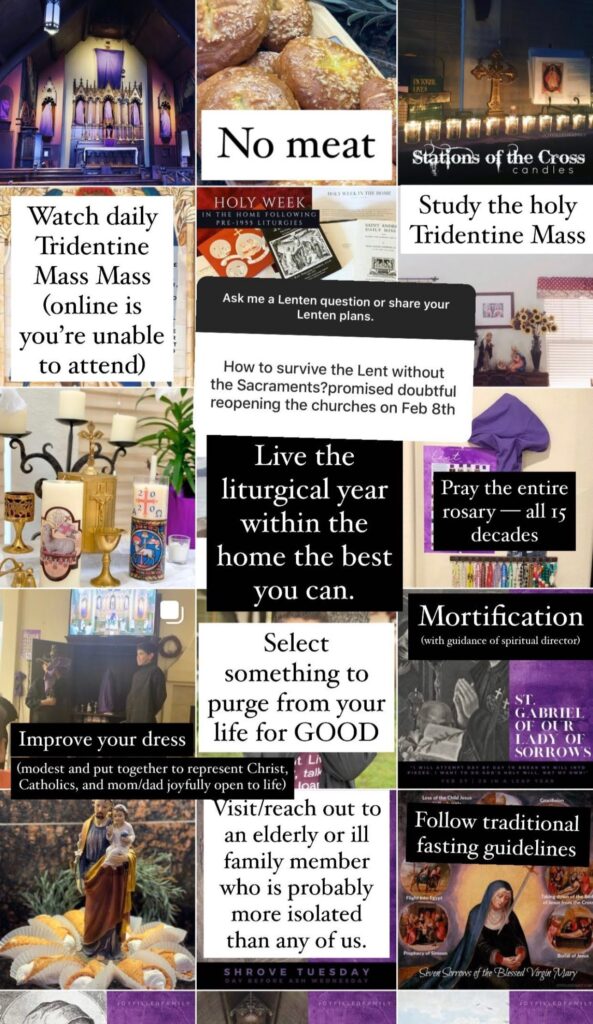

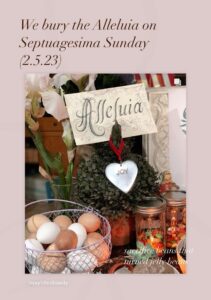
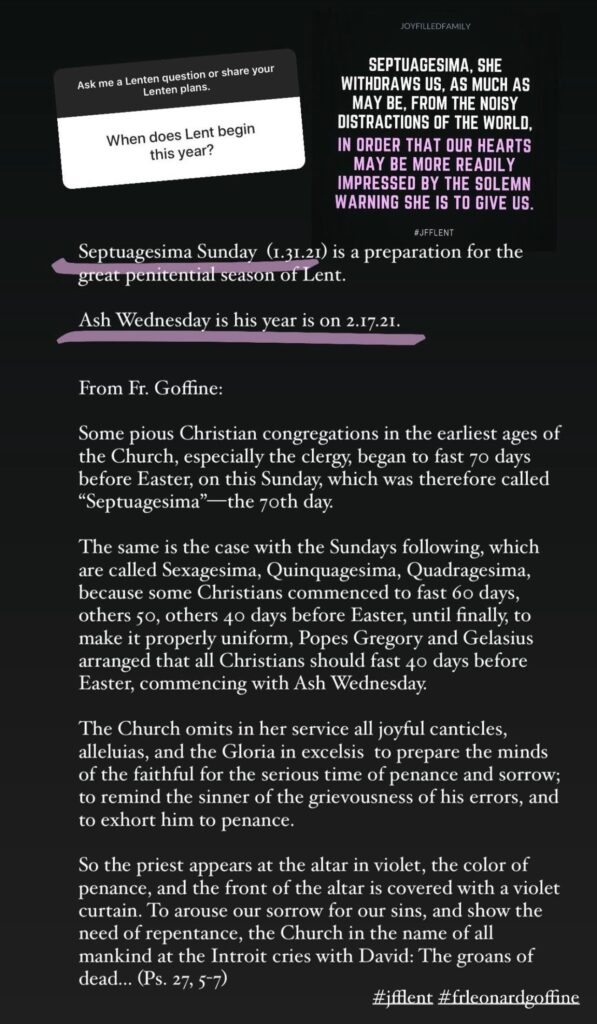
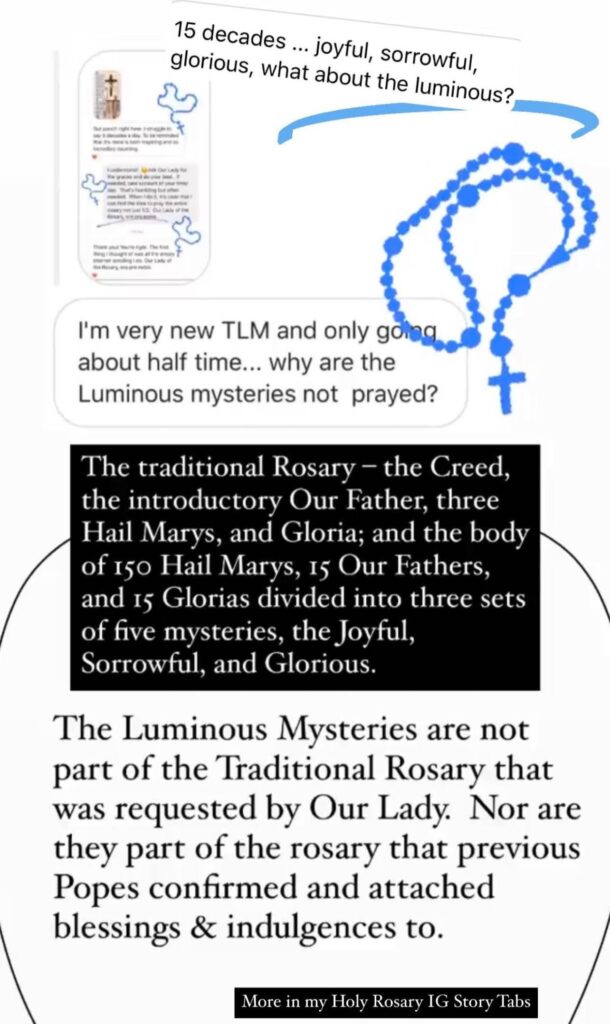
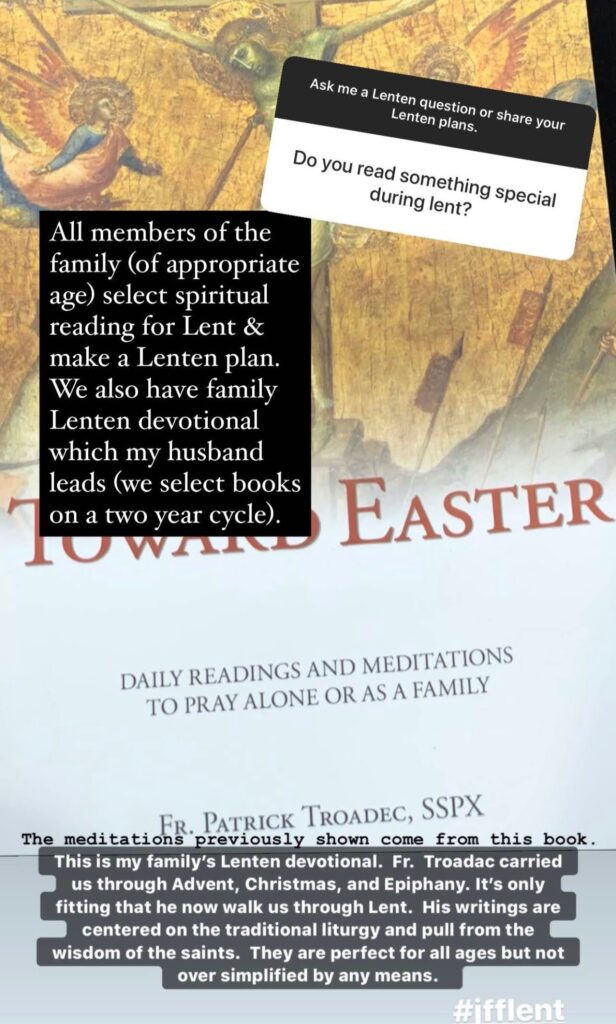
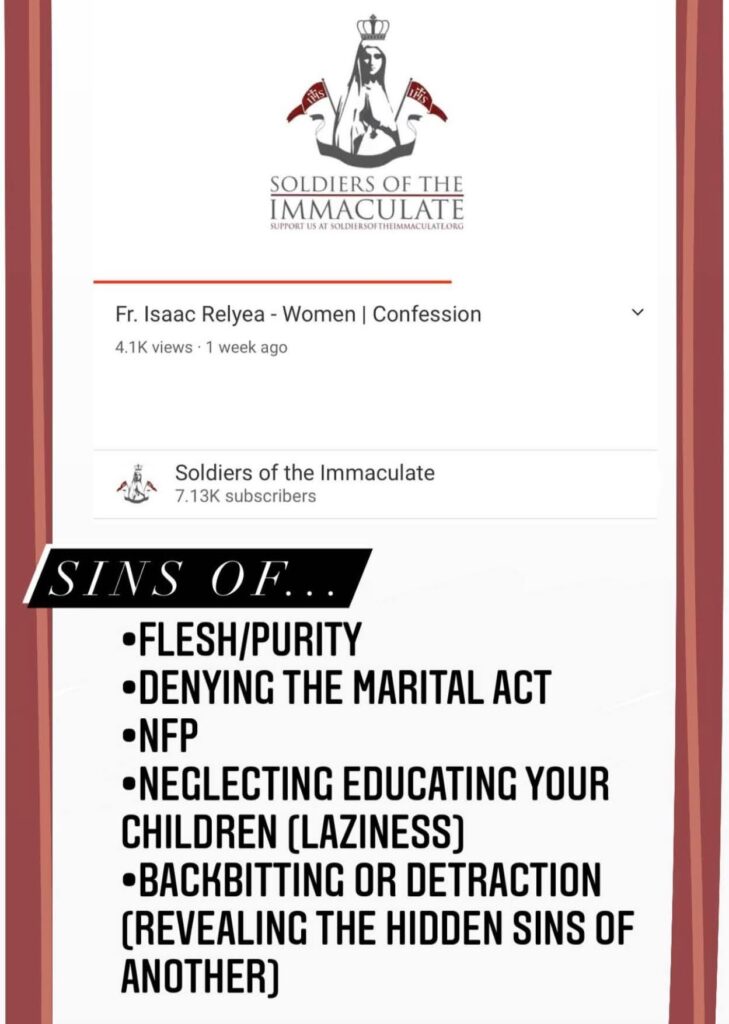
Leave a Reply